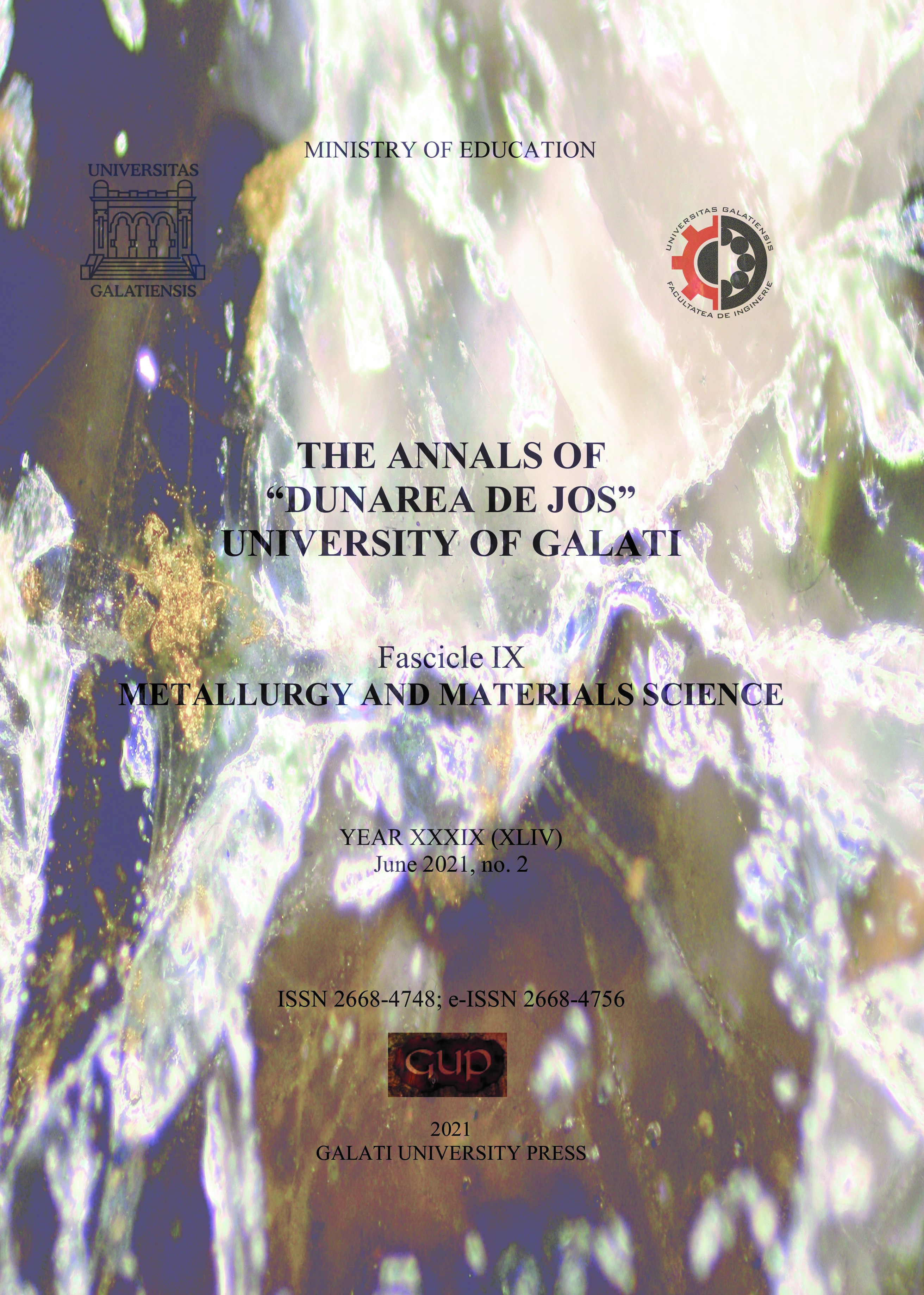Wastewater Treatment for Heavy Metals and Dyes Using Low-Cost Biosorbents: A Review
Abstract
The pollution of industrial wastewater with heavy metals and dyes is a highly important environmental problem, because of the propagation of the pollution and because of its unfavourable consequences. Sustainable wastewater treatment is one of the foremost challenges of this century. Various waste materials characterized by lignocellulose composition are low cost, non-conventional adsorbent for biosorptive removal of heavy metal ions from aqueous solutions. Recent studies point to the potential of use of low-cost materials (zeolites, carrot residue and green tea waste) as effective sorbents for the removal of Cd2+ from aqueous solution. The use of bentonite to the treatment of wastewater containing reactive dyes in aqueous solutions requires the modification of the hydrophilic surface by inorganic cations with organic cations exchange. The use of bentonite as an inexpensive sorbent for the removal of Remazol Brilliant Blue R (RBBR) from synthetic aqueous solutions has been also presented in recent studies. The influence of some parameters such as: pH, initial dye concentration, sorbent dose on sorption kinetics for dye removal has been reviewed in this paper.
Downloads
References
[2]. Amarasinghe B. M., Williams R. A., Chemical Engineering Journal, 132, p. 299-309, 2007.
[3]. Eslamzadeh T., Nasernejad B., Bonakdar Pour B., Zamani A., Esmaail B. M., Iranian Journal of Science & Technology, Transaction A, 28 (A1), p. 161-167, 2004.
[4]. El-Ashtoukhya E.-S. Z., Amina N. K., Abdelwahabb O., Desalination, 223, p. 162-173, 2008.
[5]. Wingenfelder U., Nowack B., Furrer G., Schulin R., Water Research 39, 200, p. 3287-3297.
[6]. Horsfall M., Spiff A., Acta Chim. Slov., 52, p. 174-181, 2005.
[7]. Tunali S., Cabuk A., Akar T., Chemical Engineering Journal, 115, p. 203-211, 2006.
[8]. Yadav S., Yadav A., Bagotia N., Sharma A., Kumar S., Journal of Water Process Engineering, 42, 102148, 2021.
[9]. Cay S., Uyanik A. Ozajik, Sep. Purif. Technol. 38, p. 273-280, 2004.
[10]. Egila J. N., Dauda B., Jimoh T., African Journal of Biotechnology, 9(48), p. 8192-8198, 2010.
[11]. Razmovski R., Ciban M., Ecological Engineering, 34, p. 179-186, 2008.
[12]. Mondal M. K., Journal of Environmental Management, 90, p. 3266-3271, 2009.
[13]. Ibrahima H., Jamila T., Hegazyb E., Journal of Hazardous Materials, 182, p. 842-847, 2010.
[14]. Ozdes D., Duran C., Senturk H., Journal of Environmental Management, 92, p. 3082-3090, 2011.
[15]. Suteu D., Zaharia C., Chemical Bulletin of “Politehnica” University of Timisoara, Romania, Series of Chemistry and Environmental Engineering, 56(70), p. 85, 2011.
[16]. Jacob J. S., Roberto L.-R., Rivera J., Ocampo R., Cerino-Cordova F., Sustainable Environment Research, 27, p. 32, 2017.
[17]. Subramani S. E., Thinakaran N., Process Safety and Environmental Protection, 106, p. 1, 2017.
[18]. Auta M., Hameed B. H., Chem. Eng. J., 175, p. 233, 2011.
[19]. Malik R., Ramteke D. S., Wate S. R., Waste Management, 27, p. 1129, 2007.
[20]. Paul S. A., Chavan S. K., Oriental Jr. Chem., 27, p. 4, 2011.
[21]. Singha B., Das S. K., Colloids and Surfaces B, 107, p. 97, 2013.
[22]. Bondarev A., Pantea O., Mihai S., Calin C., Gheorghe C. G., REV.CHIM., 67 (4), p. 728-733, 2016.
[23]. Bombos D., Ganea R., Matei V., Marinescu C., Bondarev A., Mihai S., Natu T., Tamas I., REV. CHIM. (Bucharest), 65 (8), p. 976-982, 2014.
[24]. Lafi R., Rezma S., Hafiane A., Removal of toluidine blue from aqueous solution using orange peel waste (OPW), Desalin. Water Treat., p. 1-12, 2014.
[25]. Owamah H., Chukwujindu I., Asiagwu A., Biosorptive capacity of yam peels waste for the removal of dye from aqueous solutions, Civil Environ. Res., 3, p. 36-47, 2013.
[26]. Santhi T., Manonmani S., Malachite green removal from aqueous solution by the peel of Cucumis sativa fruit, Clean Soil Air Water, 39, p. 162-170, 2011.
[27]. Hou S., Adsorption properties of pomelo peels against methylene blue in dye wastewater, Adv. Mater. Res., 634-638, p. 178-181, 2013.
[28]. Bello O. S., Ahmad M. A., Semire B., Scavenging malachite green dye from aqueous solutions using pomelo (Citrus grandis) peels: kinetic, equilibrium and thermodynamic studies, Desalin. Water Treat., p. 1-15, 2014.
[29]. Bello K., Sarojini B. K., Narayana B., Rao A., Byrappa K., A study on adsorption behavior of newly synthesized banana pseudo-stem derived superabsorbent hydrogels for cationic and anionic dye removal from effluents, Carbohydr. Polym., 181, p. 605-615, 2018.
[30]. Erfani M., Javanbakht V., Methylene Blue removal from aqueous solution by a biocomposite synthesized from sodium alginate and wastes of oil extraction from almond peanut, Int. J. Biol. Macromol., 114, p. 244-255, 2018.



